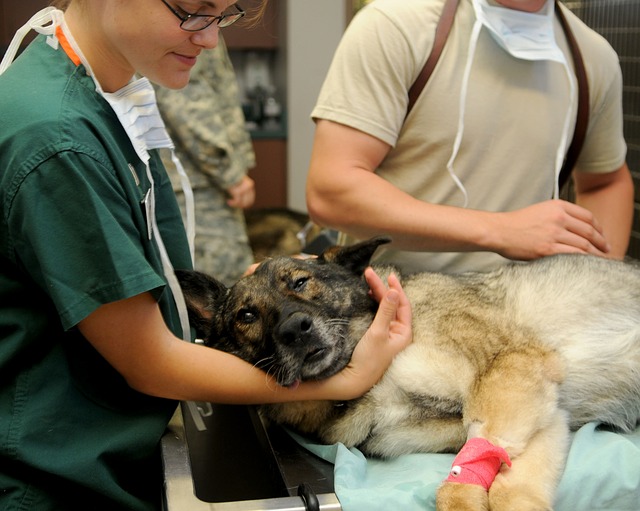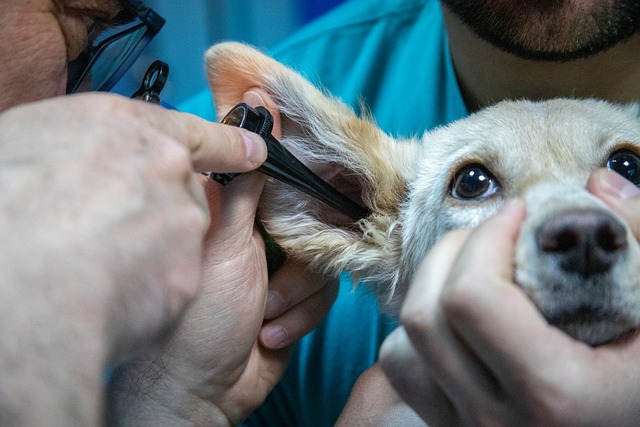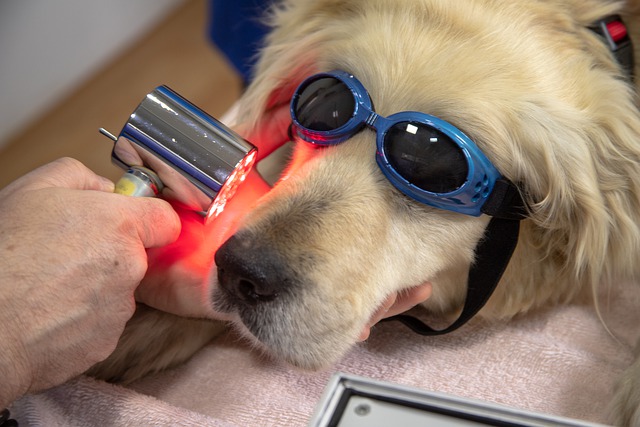Those interested in veterinary medicine may want to try and see if the field is the right choice for them without dedicating years to become a veterinarian.
Such students may choose to become a vet assistant or vet technician instead, or first.
Both vet assistants and techs work closely with veterinarians and perform similar tasks.
However, the two roles are significantly different in terms of responsibilities, requirements, and scope of practice.
If you are deciding between the two careers, you need a good understanding of each.
Article Table of Contents
- 1 Similarities, Differences, and Overlap
- 2 Vet Tech vs. Vet Assistant: Comparison
- 2.1 Number Practicing in the U.S.
- 2.2 Pay
- 2.3 Expected Job Growth
- 2.4 Degree Requirements
- 2.5 Degrees Available
- 2.6 Program Details
- 2.7 School Accreditation
- 2.8 Licensing/Certification
- 2.9 Re-licensing or Re-certification
- 2.10 Practice Framework
- 2.11 Tools and Equipment Used
- 2.12 Opportunities for Specialization
- 2.13 Responsibilities on the Job
Similarities, Differences, and Overlap
There are numerous similarities between vet assistants and techs, so many people confuse the two positions.
Both professionals assist the vet with their work and fulfill their requests.
Neither vet techs nor assistants are allowed to diagnose or prescribe medication or treatment for animals.
Also, since both techs and assistants work closely with vets, they may work in a similar setting, such as an animal hospital or clinic.
Besides this, the qualifications and responsibilities in the two positions differ drastically.
First, vet assistants don’t need any formal education and license to start working after receiving a high school diploma or GED.
Vet technicians, on the other hand, need an associate’s or bachelor’s degree from a 2-4-year college or university and pass an exam, according to the American Veterinary Medical Foundation (AVMA).
In general, vet assistants handle more clerical work and office support, as well as answer clients’ questions, and help restrain animals.
They usually deal with people as much as with animals.
Vet techs perform more animal nursing duties, such as caring for wounds, assisting with surgery-related tasks, filling and dispensing prescription medications.
They also handle such tasks as lab work (e.g., blood work), parasitic identification, urinalysis, etc.
Contrary to vet assistants, vet technician can pursue additional specialties while studying, such as dental technology, anesthesia, emergency, and critical care, equine veterinary nursing, internal medicine, zoological medicine, or animal behavior.
To start working as a vet tech, you need more education and a license (in most states).
Vet technicians generally have more patient care responsibilities than vet assistants.
Vet Tech vs. Vet Assistant: Comparison
To better explain the similarities and differences between vet assistants and techs, we have put together a detailed comparison of the two professions.
Also, keep in mind, that the BLS projects the employment growth for vet technologists and technicians of 19%, and only 9% for vet assistants and laboratory animal caretakers, over the next decade.
Both rates are higher than the national average for all occupations (7%), so both careers are growing.
However, the demand for vet techs in much higher.
While this isn’t a 100% guarantee for future employment, it’s something to keep in mind.
Number Practicing in the U.S.
Veterinary Technician:
According to the BLS, 95,600 vet technicians were employed in the US, as of 2014.
Veterinary Assistant:
In 2014, 73,400 vet assistants were employed in States, according to the BLS.
Pay
Veterinary Technician:
Veterinary technicians had a median salary of $31,070 per year ($14.95 per hour), as of 2014.
Veterinary Assistant:
The BLS reports that vet assistants had a median salary of $23,790 per year, or $11.44 per hour, in 2014.
Expected Job Growth
Veterinary Technician:
The employment rates are expected to grow by 19% by 2024, which means 17,900 new openings.
Veterinary Assistant:
The job growth for vet assistants is expected to be 9% by 2024, with 6,600 new positions.
Degree Requirements
Veterinary Technician:
Veterinary technicians need an associate’s or bachelor’s degree in veterinary technology to be eligible to work in the industry.
Veterinary Assistant:
Veterinary assistants need only a high school diploma or GED to start working.
Degrees Available
Veterinary Technician:
Vet techs can obtain either an associate’s or bachelor’s degree.
However, according to the AVMA, those who hold a four-year degree have higher salaries and more job responsibilities.
Veterinary Assistant:
Vet assistants can choose any level of a degree in any field, but this is not an official requirement.
Some programs, typically undergraduate certificate programs, are designed for vet assistants, but they can also be trained on-the-job.
Program Details
Veterinary Technician:
Programs for veterinary techs cover courses on various subjects, including pathology, physiology, biology, medical math and terminology, toxicology, veterinary pharmacology, animal nutrition, and more.
Students can take additional courses, depending on the specialization they pursue.
Veterinary Assistant:
In the vet assistant program, students gain hands-on experience while dealing with animals and assisting vets.
They also gain various administrative skills, including those necessary to interact with clients, run the office front desk, and assist with keeping the office in order.
School Accreditation
Veterinary Technician:
Schools can have probationary accreditation, initial accreditation, or full accreditation through the AVMA Committee on Veterinary Technician Education and Activities (CVTEA).
Veterinary Assistant:
While no accreditation process is required, there is a list of NAVTA-approved veterinary assistant programs through which students can receive training in the field.
Licensing/Certification
Veterinary Technician:
The regulations for vet techs differ by state.
However, generally, they include passing the Veterinary Technician National Examination offered by the American Association of Veterinary State Boards.
However, this organization doesn’t license or certify vet technicians.
Every state has a licensing board.
Veterinary Assistant:
Vet assistants aren’t required to be licensed.
Re-licensing or Re-certification
Veterinary Technician:
In some cases, vet technicians may have to go through the re-licensing or re-certification process every so often.
Or if they didn’t meet the requirements of the licensing board of the state.
Veterinary Assistant:
Since vet assistants aren’t required to be certified, there’s no re-certification either.
Practice Framework
Veterinary Technician:
According to the AVMA, all vet technicians work under the supervision of a licensed vet.
Veterinary Assistant:
Vet assistants should be supervised either by a vet technician or veterinarian.
Tools and Equipment Used
Veterinary Technician:
As the O*NET OnLine reports, vet technicians use the following types of tools and equipment regularly while working:
- Animal husbandry equipment.
- Nebulizer or accessories.
- Emergency medical services suction units or accessories.
- Laryngoscopes or accessories.
- Animal catching devices.
If a vet tech chooses a specialty during their education, they may also become proficient at operating more equipment.
For instance, those who specialize in veterinary dental medicine use dental equipment.
Techs specializing in veterinary surgery are trained to use surgical tools.
Additionally, vet technicians may have to use the following technology:
- Office suite software.
- E-mail software.
- Database user interface and query software.
- Spreadsheet software.
- Medical software.
Veterinary Assistant:
Vet assistants use various tools and equipment, as O*NET OnLine describes, which include:
- Urinalysis analyzers.
- Medical x-ray film or cassette.
- Veterinary injection or suction units or accessories.
- Animal shearing or clipping equipment.
- Medical x-ray units for general diagnostic use.
It’s essential to remember that vet assistants may not use all of these tools during their careers, and for some of these equipment types, they may have to obtain some formal training.
Besides, the use of any of these tools should be supervised by a veterinarian.
Additionally, vet assistants should be proficient in a specific technology, such as spreadsheet software, office suite software, label making software, medical software, etc.
Opportunities for Specialization
Veterinary Technician:
Often, vet technology students may choose to specialize in a variety of areas, such as veterinary nutrition, veterinary dental medicine, animal behavior, veterinary surgery, emergency and critical care, and others, according to NAVTA.
Veterinary Assistant:
Since vet assistants aren’t required to have any formal education, specialization is usually unavailable.
However, depending on the workplace, they may acquire various levels of responsibility despite their education.
Responsibilities on the Job
Veterinary Technician:
Vet technicians may have various responsibilities, depending on the practice, but generally, their tasks may include the following, according to O*NET OnLine:
- Caring for and monitoring the condition of animals, especially those recovering from surgery.
- Administering first-aid to animals in need.
- Administering amnesia to animals.
- Restraining animals during exams or procedures.
- Maintaining a controlled drug inventory.
Veterinary Assistant:
According to O*NET OnLine, vet assistants are responsible for the following tasks:
- Assisting veterinarians in examining animals.
- Holding or restraining animals when required.
- Cleaning or maintaining kennels, animal holding areas, or other areas throughout the clinic or practice.
- Monitoring animals recovering from surgery.




